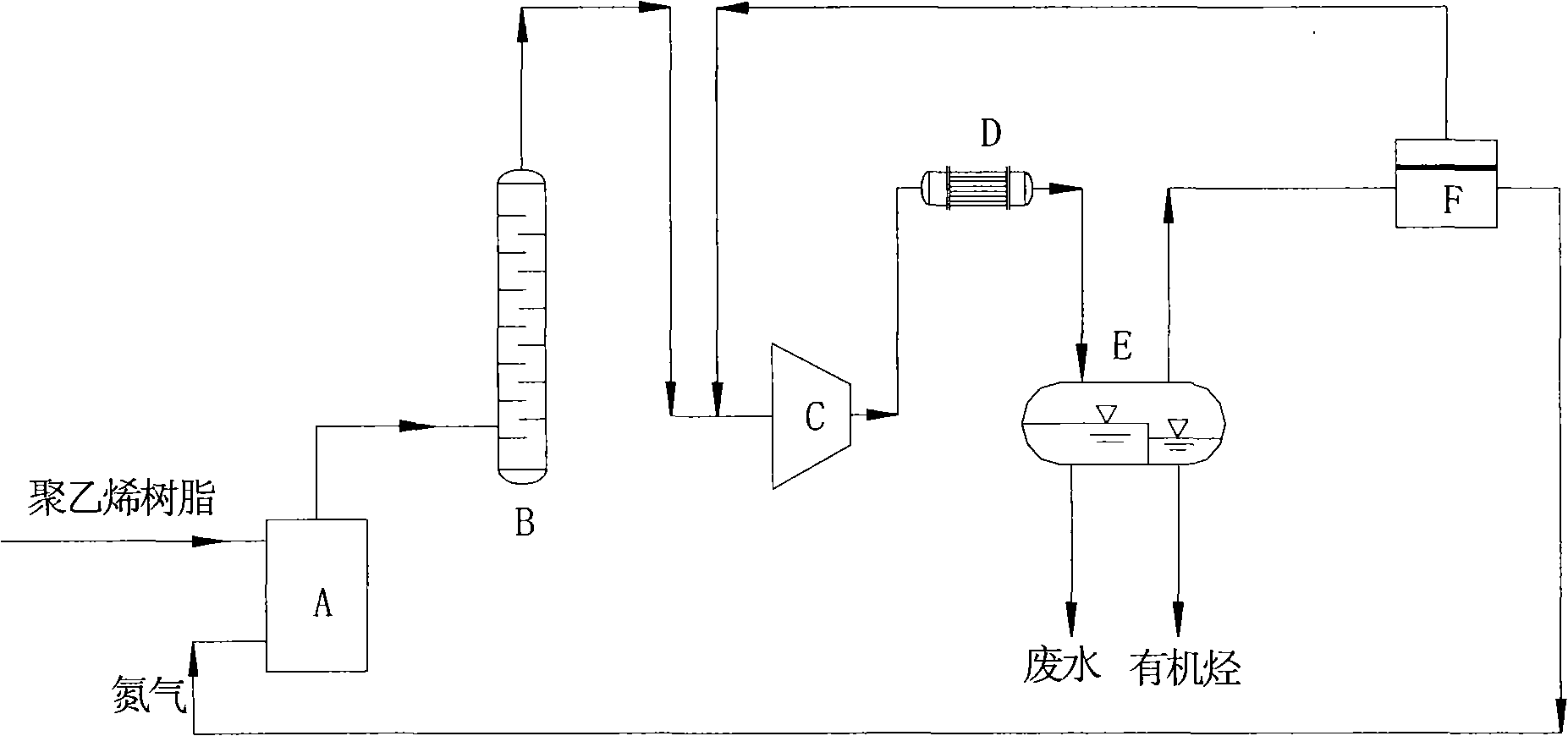Technique for reclaiming organic hydrocarbon and nitrogen gas from polyethylene device tail gas
A technology for organic hydrocarbons and polyethylene, applied in the field of recovery of organic hydrocarbons and nitrogen, to achieve good separation and recovery effects, simple process, and convenient operation
- Summary
- Abstract
- Description
- Claims
- Application Information
AI Technical Summary
Problems solved by technology
Method used
Image
Examples
Embodiment 2
[0019] In the second preferred embodiment of the present invention, the operating pressure of the alkaline scrubber B is 1.0 MPa (A), and the operating temperature is 30 °C; to 25°C; the gas discharged from the separator E enters the organic vapor membrane separator F with a film feed temperature of 25°C and a film feed pressure of 0.6 MPa (A). The rest are the same as in Example 1. It was determined that the content of HCl in the tail gas after alkali washing was 33 ppm, the recovery rate of hexane was 99%, and the recovery rate of nitrogen was 98.5%.
Embodiment 3
[0021] In the third preferred embodiment of the present invention, the operating pressure of the alkaline scrubber B is 0.6 MPa (A), and the operating temperature is 100 ° C; to 25°C; the gas discharged from the separator E enters the organic vapor membrane separator F with a film feed temperature of 25°C and a film feed pressure of 1.0 MPa (A). The rest are the same as in Example 1. It was determined that the content of HCl in the tail gas after alkali washing was 41 ppm, the recovery rate of hexane was 99.3%, and the recovery rate of nitrogen was 99.2%.
Embodiment 4
[0023] In the fourth preferred embodiment of the present invention, the operating pressure of the alkaline scrubber B is 1.0 MPa (A), and the operating temperature is 10 °C; to 25°C; the gas discharged from the separator E enters the organic vapor membrane separator F with a film feed temperature of 25°C and a film feed pressure of 1.5MPa (A). The rest are the same as in Example 1. It was determined that the content of HCl in the tail gas after alkali washing was 49 ppm, the recovery rate of hexane was 99.5%, and the recovery rate of nitrogen was 99.4%.
PUM
 Login to View More
Login to View More Abstract
Description
Claims
Application Information
 Login to View More
Login to View More - R&D
- Intellectual Property
- Life Sciences
- Materials
- Tech Scout
- Unparalleled Data Quality
- Higher Quality Content
- 60% Fewer Hallucinations
Browse by: Latest US Patents, China's latest patents, Technical Efficacy Thesaurus, Application Domain, Technology Topic, Popular Technical Reports.
© 2025 PatSnap. All rights reserved.Legal|Privacy policy|Modern Slavery Act Transparency Statement|Sitemap|About US| Contact US: help@patsnap.com



